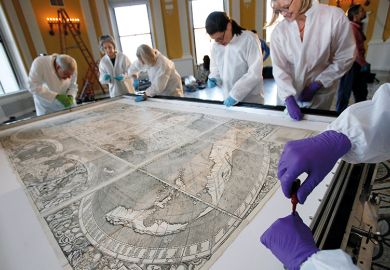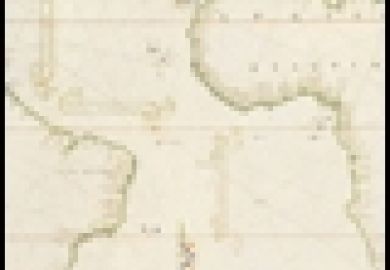We take maps much too much for granted. Yet they are fascinating texts, to be deconstructed in the same way that other written or visual texts have been deconstructed in recent times. In this way, we can reach a fuller understanding of why such texts were created and the power relations that ensure which get published. Many have been used as important agents of political propaganda, especially in cases of territorial and border dispute, attempting to win over adherents by presenting selective information in textbooks and atlases, and on posters.
Classic works such as Mark Monmonier’s How to Lie with Maps (1991) and Jeremy Black’s Maps and Politics (1997) have provided a framework for the understanding of such cartographic geopolitics. Christine Leuenberger and Izhak Schnell’s book is an important contribution to the use of maps in the ongoing Israel/Palestine conflict. The subtitle highlights the way in which geography and cartography have become an integral part of the conflict.
With ample use of examples, The Politics of Maps traces the history of maps in the region, focusing on the ways that both historical and contemporary images are used in nation-building. They range from British Mandate maps and those of the pre-state Zionist organisation to the ones produced by the mapping authority of the state of Israel. Although the authors focus on the Israeli side of the equation, a final chapter discusses Palestinian map-making, which has become increasingly sophisticated in recent years through the cartographic skills of the Applied Research Institute – Jerusalem in order to promote their own state-building process.
Israel has a highly professional mapping authority that produces maps at many different scales, for schoolchildren, university students, hikers, environmentalists, town planners and politicians. Yet even these are sometimes affected by political factors, if only in the choice of language and the location of state borders – and whether they feature the Green Line, which has formally separated Israel from the West Bank since 1948.
The discussion of how maps have been used by groups of different political persuasions will be of great interest to students of Israeli politics. Left-wing parties and peace movements home in on West Bank settlements, in an effort to highlight the nature of occupation; right-wingers play up the dimensions of the biblical territories of the ancient Jewish homeland; and security-oriented interest groups, by contrast, stress the small size of today’s Israel and include indications of the potential reach of missiles from neighbouring states. The choice of Hebrew, Arabic or English can also be significant, depending on the specific target audiences for the maps.
Overall, this fascinating, informative and critical book is a must-read for anyone interested in political cartography or the Israel-Palestine conflict. The authors reveal a country with a highly professional and technological mapping process, but one that can – at times – be manipulated as a means of disseminating or emphasising specific political messages. In an era of digitised and Google maps, it is far less easy than in the past to advance one side of the conflict, yet Leuenberger and Schnell make clear just how important mapping and cartography remain within the political process.
David Newman is professor of geopolitics at Ben-Gurion University of the Negev, Israel.
The Politics of Maps: Cartographic Constructions of Israel/Palestine
By Christine Leuenberger and Izhak Schnell
Oxford University Press, 252pp, £47.99
ISBN 9780190076238
Published 17 September 2020
POSTSCRIPT:
Print headline: Many ways to chart a dispute
Register to continue
Why register?
- Registration is free and only takes a moment
- Once registered, you can read 3 articles a month
- Sign up for our newsletter
Subscribe
Or subscribe for unlimited access to:
- Unlimited access to news, views, insights & reviews
- Digital editions
- Digital access to THE’s university and college rankings analysis
Already registered or a current subscriber?







